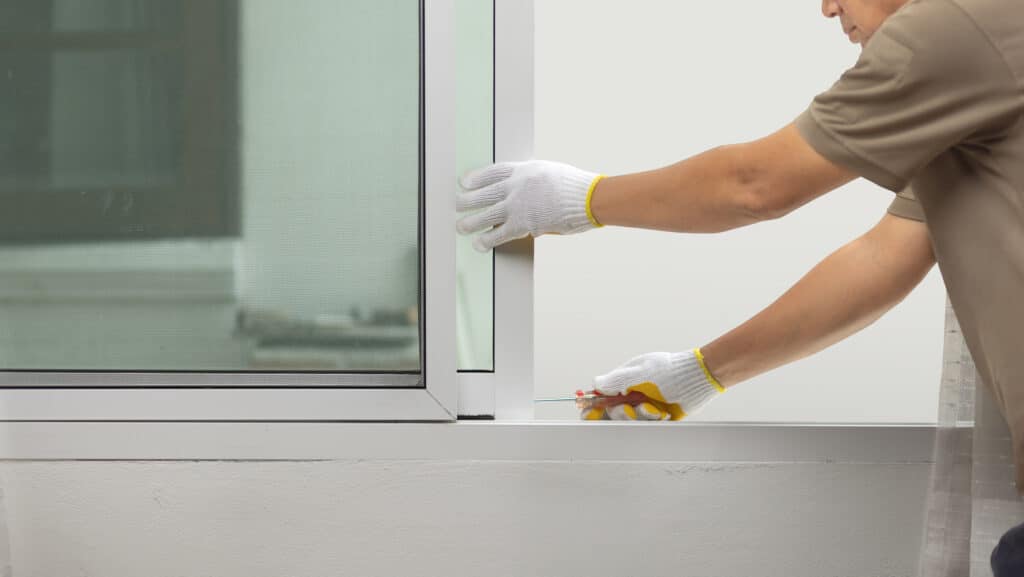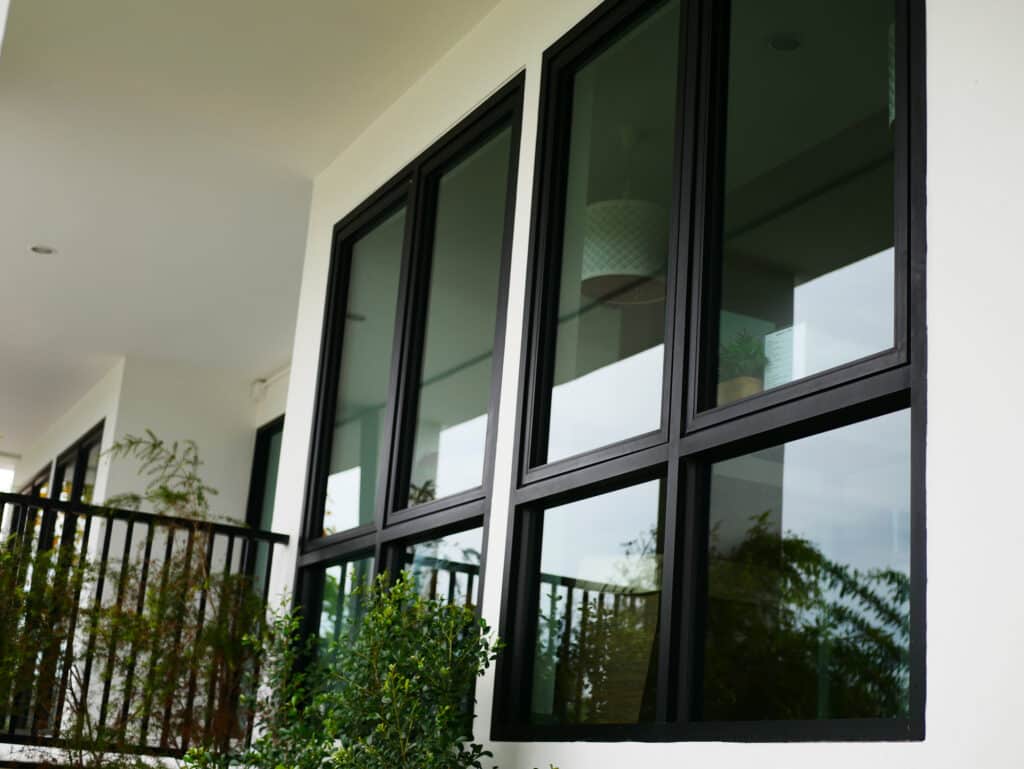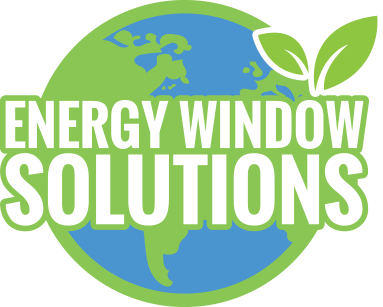
How Thermal Breaks in Windows Improve Energy Efficiency
Thermal breaks could be the secret behind that. These are innovative features inside modern windows that make a huge difference in energy efficiency.
If you live in places with hot summers and chilly winters, like Dallas, Fort Worth, or Southlake, TX, thermal breaks can help keep your home cozy while cutting down on energy bills. Let’s explore what thermal breaks are and why they’re a smart choice for homeowners.
What Are Thermal Breaks?
Thermal breaks are materials embedded within window frames to prevent heat from moving easily between the inside and outside of your home, which can drastically improve energy efficiency.
They’re particularly valuable in climates like Dallas, Fort Worth, and Southlake, where seasonal changes mean homes face both sweltering summers and cooler winter months.
In most cases, thermal breaks are used within aluminum window frames, which are popular for their durability and sleek appearance but tend to conduct heat very well. Aluminum, without any modifications, allows heat to flow directly through the frame, raising indoor temperatures in the summer and losing warmth in the winter.
How Do Thermal Breaks Work in Windows?
Thermal breaks work by adding a non-conductive material within the frame of a window, which stops heat from traveling directly through the frame. When installed in aluminum windows, a material like plastic or resin acts as a barrier, blocking the natural conductivity of aluminum and keeping your indoor temperature stable.
This “break” in the path reduces the rate of heat transfer significantly, meaning that in the hot Texas summer, less outdoor heat seeps into your home.
Likewise, during colder months, the warmth inside is retained more effectively, reducing heat loss and helping to maintain a cozy interior. By slowing down heat transfer, thermal breaks also lessen the workload on HVAC systems, which translates to lower energy consumption and cost savings over time.

Types of Windows with Thermal Breaks
There are various types of windows with thermal breaks that provide excellent insulation benefits for homeowners. Double-glazed and triple-glazed windows are popular options, as they incorporate layers of glass with thermal breaks within the frames to reduce heat transfer even further.
These multi-layered windows have an added layer of insulation between the panes, often filled with inert gases like argon, which improves their energy efficiency.
Additionally, the frame materials used with thermal breaks play a crucial role in performance. Materials like aluminum, vinyl, and fiberglass frequently include thermal breaks to enhance their insulation properties while providing the strength and durability homeowners need.
Benefits of Thermal Breaks for Home Energy Efficiency
Thermal breaks offer several powerful benefits for improving the energy efficiency of your home. They help reduce heat loss during the colder months, ensuring your home stays warmer without needing to overwork your heating system. In summer, thermal breaks also work to block excessive outdoor heat, keeping your indoor space cooler and more comfortable.
Reducing Heat Loss in Winter
Thermal breaks act as a protective barrier against heat loss during winter, especially in metal-framed windows that would otherwise let warmth escape. When a thermal break is embedded within the window frame, it prevents indoor heat from seeping out through the metal, keeping your home warmer and more energy-efficient.
This insulation effect is particularly helpful in reducing heating costs, as your system won’t have to work as hard to maintain a comfortable temperature.
Additionally, homes equipped with insulated window frames tend to feel cozier, as there’s less cold air radiating from the windows. Overall, this design improvement makes a noticeable difference in reducing wintertime chill indoors.
Blocking Heat in Summer
During the hot Texas summers, these insulated window frames prove especially valuable as they help prevent outdoor heat from entering the home. The barrier created within the frame stops the transfer of heat, reducing the amount of warm air that seeps indoors through the window.
This means your air conditioning system won’t need to run constantly to counteract the heat, resulting in lower energy bills and a more stable indoor temperature.
Homes in warmer climates benefit significantly from this feature, as it lessens the impact of extreme summer heat, making interiors feel cooler and more comfortable. This cooling effect also reduces wear on cooling systems, helping them last longer.
Preventing Condensation
Another benefit of these insulated frames is their ability to prevent condensation from forming on windows, a common issue in humid or fluctuating climates.
When warm indoor air meets a cold window surface, moisture can build up, creating an ideal environment for mold and mildew. The insulating layer in the window frame keeps the inner temperature closer to the room’s ambient temperature, reducing the risk of condensation.
This keeps windows clearer and protects surrounding walls and sills from water damage. Less moisture around your windows also means fewer maintenance issues, making these frames a practical choice for preserving your home’s condition.
Improving Window Durability
In addition to boosting energy efficiency, these insulated frames extend the life of your windows by minimizing temperature-related wear and tear. When frames experience extreme temperature shifts, the materials can expand and contract, eventually leading to warping, cracking, or other damage.
The internal insulating layer within the frame absorbs and limits these shifts, reducing stress on the material. This means your windows will stay in good shape for longer, with less need for repairs or replacements. For homeowners, this added durability translates to a smart long-term investment that keeps both comfort and maintenance in check.
How Thermal Breaks Contribute to Overall Home Comfort
The energy-saving design features in modern windows don’t just improve efficiency—they also significantly boost home comfort. By helping to keep indoor temperatures steady, these window features ensure your spaces stay cozy year-round, regardless of the weather outside.
Maintaining a Stable Indoor Temperature
One of the main ways these insulated window frames enhance comfort is by maintaining a consistent indoor temperature, regardless of outdoor conditions. When temperatures rise or fall dramatically, these barriers help limit the transfer of heat, making it easier for your HVAC system to maintain a comfortable climate indoors.
This stability is particularly valuable in places like Dallas and Fort Worth, where the weather can swing from one extreme to the other. The result is a home that feels naturally comfortable without frequent HVAC cycling, allowing for a stable and cozy environment.
Noise Reduction
These energy-efficient window designs also offer sound insulation, which can be a major benefit if you live in a noisy area. The same layers that prevent heat from passing through the frame also help block external noise, resulting in a quieter home.
This sound-dampening effect is even more noticeable with multi-pane windows, where the gaps between panes and specialized frame materials work together to minimize outside noise.
For homeowners near busy streets or in densely populated neighborhoods, this added quiet can make a noticeable difference in comfort, letting you enjoy a more peaceful indoor setting.
How Thermal Breaks Can Save You Money
Choosing windows with insulated frames doesn’t just enhance comfort—it can also lead to noticeable savings. By improving your home’s energy efficiency, these windows reduce the workload on your heating and cooling systems, which translates directly into lower utility bills.
Lowering Heating and Cooling Costs
One of the biggest financial benefits of insulated windows is the reduction in heating and cooling expenses. By minimizing heat loss in winter and blocking excessive heat in summer, these windows allow your HVAC system to run less frequently, resulting in lower energy consumption.
For homeowners in warm climates like Texas, where air conditioning is essential for much of the year, these savings can be substantial. The less your system has to work to maintain a comfortable temperature, the more you’ll save on monthly bills.
Potential for Tax Credits and Rebates
In many cases, upgrading to energy-efficient windows can make you eligible for tax credits or rebates, helping to offset the cost of installation. Many states and local governments offer incentives for homeowners who invest in energy-saving improvements, and energy-efficient windows are often part of these programs.
It is worth checking with local energy providers or government programs in your area to see if such rebates apply. These incentives, combined with the long-term savings on utility costs, make energy-efficient windows an investment that pays off over time.
How to Choose Windows with Thermal Breaks
Selecting the right windows with insulated frames can make a significant impact on your home’s energy efficiency and comfort. A few key factors can help guide your decision, such as the type of window materials, energy efficiency ratings, and the specific climate in your area. Each of these elements influences how well your windows will perform over time, so it is essential to weigh them carefully.
Check Window Materials
The type of material used in window frames plays a crucial role in both durability and insulation. Aluminum frames, known for their strength and sleek look, often need added insulation to reduce heat transfer, as they naturally conduct heat quite well.
Vinyl and fiberglass frames, by contrast, provide natural insulation without needing additional barriers, making them popular choices for energy efficiency.
However, aluminum frames offer a wider variety of styles and are generally more durable than vinyl, which is ideal for homeowners seeking both function and aesthetic appeal. Choosing the right frame material ensures your windows meet your specific needs, balancing appearance, strength, and energy efficiency effectively.
Energy Efficiency Ratings
When you are selecting windows, consider their energy efficiency ratings, particularly the U-factor and Solar Heat Gain Coefficient (SHGC). The U-factor measures how well a window prevents heat from escaping, while the SHGC indicates the amount of solar heat allowed to pass through.
Lower values in both these categories mean the window offers better insulation and energy-saving performance. Additionally, looking for Energy Star-certified windows can simplify your search, as these products meet stringent energy standards for efficiency.
Choosing windows with top ratings not only ensures a more comfortable home environment but also reduces long-term energy costs, making them a wise investment for any homeowner.
Consider Your Climate
The climate of your region is an important factor when choosing energy-efficient windows. In warmer areas like Dallas or Fort Worth, windows with a low SHGC are ideal, as they limit the amount of solar heat that enters your home, keeping interiors cooler.
On the other hand, homes in colder climates benefit more from a higher SHGC, which allows sunlight to naturally warm the space during winter.
Understanding the specific climate demands of your area helps you select windows that meet seasonal needs, ensuring year-round comfort with minimal energy use. This climate-based approach to window selection optimizes performance, helping to maintain indoor comfort without excessive energy consumption.
Working with a Professional Installer
Professional installation is essential for getting the most out of your energy-efficient windows. Even the highest-rated windows can underperform if they aren’t installed correctly, as misalignment or gaps around the frame can lead to drafts and reduce insulation effectiveness.
A professional installer can assess your home’s requirements, recommend suitable windows, and ensure they’re fitted with precision for optimal performance.
Additionally, professional installation often comes with warranties or guarantees, offering peace of mind that your investment is protected. With expert installation, you can be confident that your windows will provide the energy efficiency, comfort, and savings you are aiming for in the long term.
Maintenance Tips for Windows with Thermal Breaks
Keeping your energy-efficient windows in good shape is essential for maximizing their performance and lifespan. Proper maintenance ensures that the insulating properties remain effective, so you can continue enjoying a comfortable and energy-efficient home. Routine cleaning, regular inspections, and occasional repairs are key to extending the life of windows with thermal breaks.
Cleaning and Caring for Thermal Break Windows
To keep your windows looking great and performing well, clean them regularly using a mild soap and water solution. Avoid harsh chemicals, as these can damage both the glass and the frame materials.
For the frames, especially if they’re aluminum or vinyl, a gentle wipe-down with a soft cloth is usually enough to remove dust and grime.
Check the window tracks as well, and clear out any debris that could prevent the window from opening and closing smoothly. Routine cleaning not only maintains the appearance of your windows but also protects their insulating components.
Signs That Your Thermal Breaks Are Worn Out
Over time, thermal breaks can experience wear, which may affect their ability to insulate effectively. Signs of wear include drafts around the window frame, increased condensation, or difficulty maintaining a stable indoor temperature.
If you notice these issues, it may be time to inspect the frames more closely or consult a professional. Catching problems early allows you to repair or replace worn-out parts before they lead to bigger issues, like moisture damage or increased energy bills. Regular maintenance checks help ensure your windows stay efficient and effective for years to come.
Ready to Boost Your Home’s Comfort and Efficiency?
If you are looking to save on energy bills while keeping your home comfortable all year round, it is time to upgrade to high-performance windows. At Energy Window Solutions, we specialize in energy-efficient windows that are perfect for the unique climate needs of Dallas, Fort Worth, and Southlake, TX.
Our expertly crafted windows are designed to provide superior insulation, helping you maintain a cozy indoor environment, regardless of the weather outside. Transform your home’s efficiency and enjoy long-term savings with the right windows. Contact Energy Window Solutions today to get started on your window upgrade!

Frequently Asked Questions (FAQs)
What is the Difference Between a Frame Insulation Barrier and Double Glazing?
A frame insulation barrier, also known as a thermal barrier, is an insulating material within the window frame that reduces heat transfer through the frame itself. Double glazing, on the other hand, consists of two glass panes separated by an air or gas-filled gap, which improves insulation within the glass portion of the window.
Are Insulated Frame Windows Worth the Investment?
Yes, windows with insulated frames are a smart investment, especially in areas with extreme temperature changes. They help lower energy bills by keeping indoor temperatures more stable, which reduces the demand on heating and cooling systems.
How Long Do Windows with Insulating Frame Barriers Typically Last?
Windows with these frame barriers are designed to last for decades, depending on the material and quality of installation. Aluminum-framed windows with this feature, for instance, can easily last 20 to 30 years when properly maintained.
Can I Add Insulation Barriers to My Existing Windows?
Adding insulation barriers to existing windows isn’t usually possible since these features are built into the frame during manufacturing. However, if your current windows are not energy-efficient, upgrading to new windows with built-in frame insulation can improve comfort and lower utility costs.
Do Frame Insulation Barriers Only Work in Cold Climates?
No, these frame barriers provide benefits in both hot and cold climates. In warmer areas like Dallas and Fort Worth, they help block outdoor heat, reducing the need for air conditioning. In colder climates, they retain indoor warmth, keeping homes cozy.
How Do I Know If My Windows Need Upgrading to Energy-Efficient Models?
If you notice drafts, higher energy bills, or difficulty maintaining a consistent indoor temperature, your windows may not be insulating effectively. Older windows, especially those without thermal breaks, allow more heat transfer, which can strain your HVAC system. Consulting with a professional to assess your windows can help determine if an upgrade to energy-efficient models with insulated frames is beneficial.


